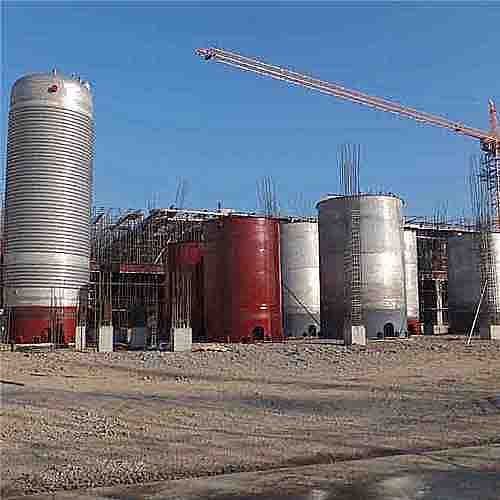Non-destructive testing should be combined with destructive testing
Non-destructive testing techniques have many advantages, but they still have their own limitations and cannot totally replace destructive testing methods. In the evaluation of pressure vessel equipment, the non-destructive testing results should be compared and verified with the results of the destructive testing in order to make a correct judgment. For instance, apart from non-destructive testing, liquefied petroleum gas cylinders should also be inspected by the blasting test. And mechanical analysis for the quality of the welded joints should also be taken. Sometimes, metallographic and fracture tests are to be performed.
Correct timing of implementation of non-destructive testing
When taking non-destructive testing for pressure vessels, the implementation timing of the testing should be correctly selected according to the purpose of testing, combined with the working conditions, materials and manufacturing process characteristics of the equipment.
For example, the split-joint seal head should be non-destructively tested after forming. Likewise, materials with a tendency of delayed cracking should be non-destructively tested after at least 24 hours of welding completion. An extra non-destructive test should be added after heat treatment for materials with a tendency of reheat cracking. With regard to low-alloy steel pressure vessels with a lower limit of strength greater than or equal to 540 MPa, after the voltage endurance test, non-destructive testing for the surface of the welded joints should also be taken.
Choosing the appropriate non-destructive testing method
When performing non-destructive testing on pressure vessel equipment, all kinds of inspection methods have certain characteristics, each method is not suitable for every workpiece and defect. In order to improve the reliability of test results, the most suitable non-destructive testing method should be select according to the materials of the device, manufacturing methods, working media, failure modes, and select the type, shape, location, and orientation of the defects that may be generated.
Comprehensive application of various non-destructive testing methods
In non-destructive testing, it must be recognized that none of the non-destructive testing methods are omnipotent, each with its own advantages and disadvantages. Therefore, in non-destructive testing, if possible, do not use merely one non-destructive testing method. Instead, use as many detection methods as possible, and learn from each other to obtain more defect information, so as to have a clearer understanding of the actual situation and be able to ensure safe and long-term operation of pressure vessel equipment.
Except the above-mentioned methods and characteristics of non-destructive testing of pressure vessels (part one and part two) that one needs to know, in practical applications, one should also combine the characteristics of various non-destructive testing methods and select suitable testing methods to make the methods more effective for pressure vessel inspection.


 English
English Español
Español русский
русский